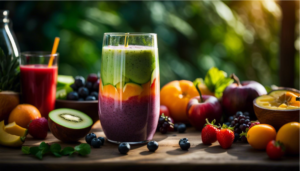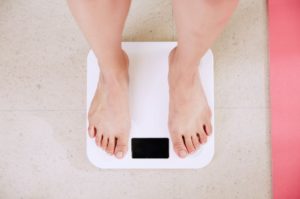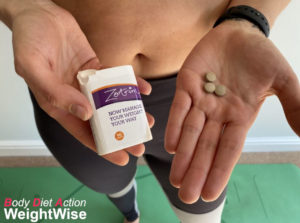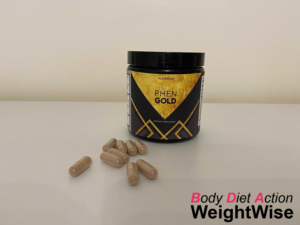If you need some discipline in your life and a structured approach to weight loss, this post is for you. You don’t have to count calories, and you don’t have to weigh your food. Using the ‘Balance of Good Health‘ we’ve worked out how many servings or portions you need from each food group, to make up a range of daily calorie (energy) requirements.
Please note: these calorie ranges are NOT designed for people under 18 years, breastfeeding or pregnant women. Also, if you have any medical problems, it’s best to seek the advice of your doctor before embarking on any structured weight loss programme.
How many calories do you need?
We all have different needs, depending on: age, gender, activity levels and body weight.
Your energy requirements will probably be higher the younger and fitter you are. If you are overweight, your energy input is higher than someone who is a healthy weight. So, to lose weight you need to take in fewer calories and/or be more physically active.
Ideally, you need to eat 500-600 calories fewer than your daily calorie needs in order to lose a healthy 0.5kg/1lb per week – you may lose more if you’re more active too.
Most women will lose about this amount of weight on 1500 calories and most men on 1800 calories. That’s why we’ve chosen these levels in the following examples. Using the food groups, we’ve worked out how many servings to have each day to make up these calories in a healthy balanced diet.
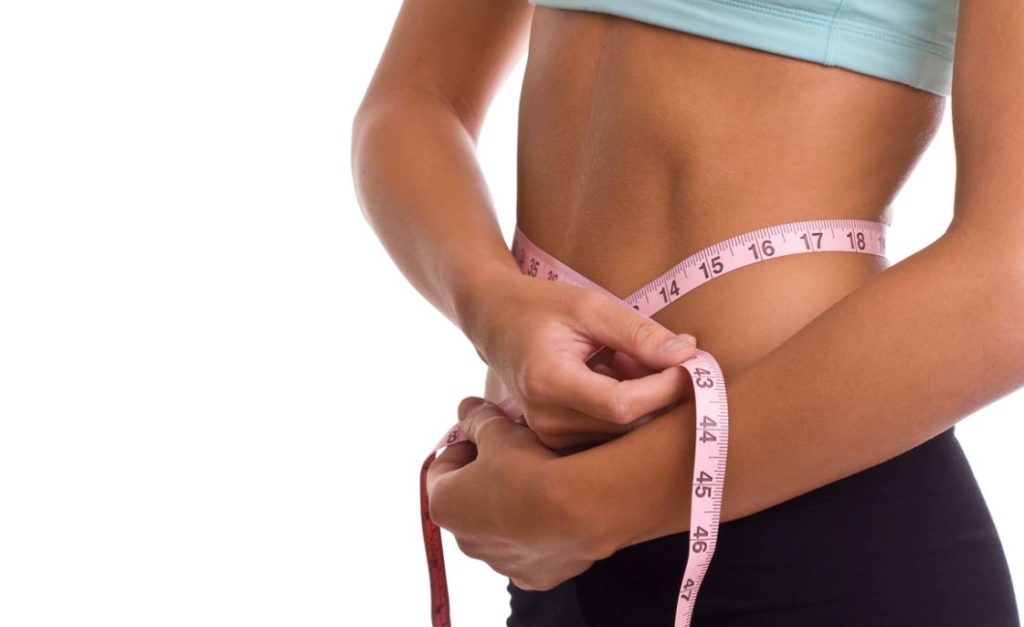
Daily calorie ranges and servings from each group
Note: kcal is the technical unit for calorie. They mean the same. 1kcal = 4.2 kilo joules (kJ), which you often also see on nutrition labels.
Guide to serving sizes
Use these charts to make up your daily allowances from each group. For some items, it might be worth weighing them out once – serving sizes may be bigger (or smaller!) than you’re used to!
Starchy – bread, other cereals and potatoes
A single serving is:
- 1 slice of bread or toast
- ½ bread roll/bagel
- 2 crispbreads
- 3 small crackers
- ½ pitta or 1 mini pitta
- 1 small chapatti
- 3 tablespoons (tbsp.) breakfast cereal
- 3 tbsp. dry porridge oats
- 2 egg-sized potatoes
- 2 heaped tbsp. boiled rice
- 3 heaped tbsp. boiled pasta
- 1 small plain naan bread
- 1 medium plantain
- 2 small oat cakes
- 1 plain biscuit
- 1 crumpet
- ½ English muffin
- ½ fruit or plain scone
- 1 scotch pancake
- 1 small slice malt loaf
- 3 cups plain popcorn
- 1 small corn on the cob
Tips:
- Aim for at least 2 servings at each meal.
- Choose wholemeal/high fibre varieties of food whenever possible.
Fruit and Vegetables
One serving of fruit is:
- 1 medium size piece of fresh fruit e.g. half a large grapefruit, a slice of melon or 2 satsumas
- 2-3 small pieces of fruit e.g. plums, apricots
- 1 handful of grapes
- 1 medium banana
- 7 strawberries
- 3 heaped tbsp. fruit (stewed or tinned in juice)
- 1 small glass fruit juice (150ml)
- 1 heaped tbsp. dried fruit e.g. raisins, or 3 dried apricots
A serving of vegetables is:
- 3 heaped tbsp. cooked vegetables e.g. carrots, peas or sweetcorn
- 1 side salad (the size of a cereal bowl)
- 1 tomato, 7 cherry tomatoes
Tips:
- Frozen or canned vegetables and fruit are good options too
- Vegetables are low calorie foods – aim to fill at least ½ your plate with them at main meals
- Fruit makes a good snack at any time
- For more about serving sizes of fruit and vegetables for good health, go to the 5 A Day section on the Department of Health’s website.
Meat, Fish and Alternatives
A single serving is:
- 60-90g (2-3oz) cooked lean beef, pork, lamb, mince, chicken, turkey or oily fish (salmon, mackerel and sardines)
- 75-120g (2 ½ – 4oz) raw meat, poultry or oily fish
- 2 thin slices of lean cold meat
- 150g (5oz) of cooked white fish or canned tuna (in brine or spring water)
- 2 eggs
- 5 tbsp. baked beans
- 4 tbsp. cooked peas, beans, lentils or dahl
- 120g (4oz) of soya, tofu or quorn
Tips:
- Try to have 1 serving of oily fish each week for good health
- Lower the fat content of main meals by replacing some meat with beans and pulses e.g. in casseroles, soups, pasta dishes and curries
- Note that the serving sizes for peas/beans etc. are different to the fruit and vegetables section, as they are included for their protein content here.
Milk and dairy foods
One serving is:
- ½ pint (200ml or 1 glass) of milk
- 1 small pot of low fat /diet yogurt / fromage frais
- 1 small matchbox size (30g / 1oz) cheddar or other hard cheese
- 45g (1 ½ oz) of half-fat cheese
- 90g (3oz) cottage cheese
- 60g (2oz) of low fat soft cheese
Tips:
- Use smaller amounts of stronger-flavoured cheese in cooking
- Skimmed and semi-skimmed milk contain just as much calcium as full-fat milk
- Check labels for fat and calorie content. Remember that less than 3g fat per 100g is low fat.
Fat and oils
A serving is:
- 1 teaspoon (1tsp.) butter or margarine
- 1 tsp. of oil or ghee
- 1 tsp. mayonnaise
- 1 tsp. nut butters
- 1 tsp. double cream
- 1 tsp. tahini
- 2 tsp. reduced fat spread / reduced calorie dressing
- 2 tsp. salad cream, reduced-fat mayonnaise or low-fat dressing
- 2 tsp. single or soured cream or half-fat crème fraiche
Tips:
- Choose a reduced fat/low fat spread.
- Always measure out your oil (1 teaspoon per person per recipe) and choose a polyunsaturated or monounsaturated variety ( e.g. olive, rapeseed, corn, soya).
- Replace cream, yogurt, creme fraiche or fromage frais with low-fat no-sugar versions.
Snacks/extras
Choose mainly fruit, vegetables or starchy-based snacks for good health.
Snacks around 50 calories
- 1 plain biscuit
- 1 medium piece of fruit
- 2 crackers/crispbreads
- Small pot of 'diet' yogurt
- 1 serving of low calorie hot chocolate drink
- Raw vegetable crudités with 30g (1oz) low fat cream cheese or 2 tablespoons salsa
- 1 meringue nest
Snacks around 100 calories
- 2 pieces of fruit
- 2 rice cakes with reduced fat spread and honey
- 1 cereal bar
- 1 fun-sized chocolate bar
- 2 plain biscuits
- 1 plain or chocolate digestive style biscuit
- 30g (1oz) boiled sweets or wine gums
- 1 small packet of lower fat crisps
- 1 crumpet with reduced sugar jam/honey
- ½ bread muffin with reduced fat spread
- 1 slice of toast with reduced fat spread and yeast extract (or other extra starch or dairy serving)
- 1 pub measure of spirit with diet mixer
- 125 ml glass of wine
- ½ pint ordinary strength lager/beer
Snacks around 200 calories
- 2 small slices toast with low-fat spread
- 1 fruit bun or scone
- 1 English bread muffin with scraping of jam
- 1 bread roll
- 1 potato scone
- 150g pot of low-fat yogurt, custard or rice pudding
- 1 small packet of crisps
- 1 small chocolate bar (30g/1oz)
- 1 chocolate biscuit
Snacks around 150 calories
- 2 slices bread or toast (with spread from allowance)
or any 2 other starchy food or dairy food servings - 2 crackers with 30g (1oz) cheese
- 3 tbsp. breakfast cereal with 1/3 pint semi skimmed milk
- 1 plain or fruit scone
- 2 fun-sized chocolate bars
- 1 small slice fruit cake or sponge cake
- 1 pint ordinary strength beer/lager
If you know you’re going out for a special meal or party, why not ‘save up’ some of your snacks/extras so that you can really enjoy an indulgent pudding or main course?
Mixed meals
What about meals made up of a mixture of foods such as pizza or lasagne? How do you decide on the serving size? All you have to do is break the meal down into its main ingredients e.g.
Pizza and Salad
The good news about the Weight Wise plan is you can still enjoy the foods you like best, with no rigid meal plans to worry about. Just mix and match your portions from each group, remembering to keep a diary along the way, to help you keep on track.

